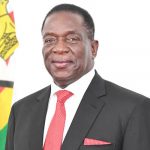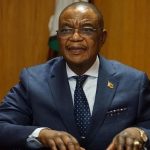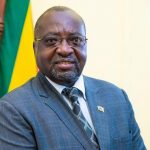Know More
About The Republic Of Zimbabwe
Zimbabwe is a beautiful country in Southern Africa that is known for its dramatic landscapes, its diverse wildlife and its hardworking people. Home to the Great Zimbabwe Monument, the mighty Victoria Falls and the majestic Eastern Highlands, the country also boasts of world class national parks in which a variety of animals, including the Big Five, can be found. The largest of these are Hwange National Park in the west, and the Gonarezhou Transfrontier Park in the South. Zimbabwe has a total land area of 390 000 square kilometres and a well educated population of around 14 million people.
Independent Since 1980
Zimbabwe gained independence from the British colonial rule on 18 April 1980.
Zimbabwe, officially the Republic of Zimbabwe, is a landlocked country in Southern Africa, between the Zambezi and Limpopo Rivers, bordered by South Africa to the south, Botswana to the southwest, Zambia to the north, and Mozambique to the east. The capital and largest city is Harare, and the second largest is Bulawayo.
A country of roughly 15 million people as per 2022 census, Zimbabwe’s largest ethnic group are the Shona, who make up 80% of the population, followed by the Northern Ndebele and other smaller minorities. Zimbabwe has 16 official languages, with English, Shona, and Ndebele the most common. Zimbabwe is a member of the United Nations, the Southern African Development Community, the African Union, and the Common Market for Eastern and Southern Africa.
Beginning in the 9th century, during its late Iron Age, the Bantu people (who would become the ethnic Shona) built the city-state of Great Zimbabwe; the city-state became one of the major African trade centres by the 11th century but was abandoned by the mid 15th century. From there, the Kingdom of Zimbabwe was established, followed by the Rozvi and Mutapa empires. The British South Africa Company of Cecil Rhodes demarcated the Rhodesia region in 1890 when they conquered Mashonaland and later in 1893 Matabeleland after the First Matabele War. Company rule ended in 1923 with the establishment of Southern Rhodesia as a self-governing British colony. In 1965, the white minority government unilaterally declared independence as Rhodesia. The state endured international isolation and a 15-year guerrilla war with black nationalist forces; this culminated in a peace agreement that established de jure sovereignty as Zimbabwe in April 1980.
The Zimbabwean Flame Lily
National Flower Of Zimbabwe
The Zimbabwean Flame Lily is part of a continent of diverse climates and landscapes. It is one of largest exporter of cut flowers in the world.
The Flame Lily is a symbol of purity and beauty around the world. It gained its status as the national flower of Rhodesia. It remained so when the country gained independence in 1980 and became Zimbabwe. In 1947 the current queen of Great Britain, Elizabeth visited Zimbabwe as a princess. The people of Rhodesia gave her a diamond brooch in the shape of a Flame Lily.
The Flower
This striking lily is is officially called:
The Gloriosa Superba
‘Amakukhulume’ in Ndebele
‘Kajongwe’ in Shona, which means ‘cockerel’.
Beautiful in a vase, it is even more glamorous in its natural setting. It can climb up to eight feet using tendrils and the flower can reach five inches across. The contrast of the bright red and yellow petals on rocky outcrops in semi-shaded areas, such as forests, makes it a target for poachers.
Vision 2030
Vision 2030 reflects the collective aspirations and determination of the people of Zimbabwe towards a Prosperous Upper Middle Income Nation by 2030.
The objectives of Vision 2030 align with those of Agenda 2063, which is the African Union’s 50 year Vision, running from 2013 to 2063.
Sustainable Development Goals
Vision 2030 also takes into cognisance the United Nations’ Sustainable Development Goals covering the period 2016-2030.
The realisation of Vision 2030 will depend on the actions and measures that we undertake through Short and Medium-Term National Development Plans as Government, private sector, cooperating partners, civil society and as individuals.
OFFICE OF THE PRESIDENT AND CABINET
The Office of the President and Cabinet (O.P.C) is the lead Office in the Government of Zimbabwe. It comprises The President, His Excellency Cde Emmerson Dambudzo Mnangagwa, Honourable Vice Presidents, Cabinet and Ministers of State. The Office exists to service the President in leading the State and Government and executing his constitutional responsibilities and duties, as articulated in Section 89 and 90 of the Constitution.
Mandate
The OPC is mandated to provide strategic policy direction, coordination, monitoring, advisory oversight, planning and realization of efficient service delivery of government ministries and departments.
Vision
A results-oriented public sector with a culture of quality service delivery to the citizenry by 2030
Mission
To lead the government machinery in the formulation, advocacy, coordination, and monitoring and evaluation of policies, programmes and projects for quality service delivery and socio-economic development

His Excellency Cde Dr. Emmerson Dambudzo Mnangagwa
President

Honourable Mr. Kembo D.C. Mohadi
Vice President

Honourable Dr. Constantino D. N. G. Chiwenga
Vice President

Dr. Martin Rushwaya
Chief Secretary To The President And Cabinet
